
Sabre Wulf is an action-adventure game released by British video game developer Ultimate Play the Game for the ZX Spectrum home computer in 1984. The player navigates the pith-helmeted Sabreman through a 2D jungle maze while collecting amulet pieces to bypass the guardian at its exit. The player does not receive explicit guidance on how to play and is left to decipher the game's objectives through trial and error. Sabreman moves between the maze's 256 connected screens by touching the border where one screen ends and another begins. Each screen is filled with colourful flora, enemies that spawn at random, and occasional collectibles.

Knight Lore is a 1984 action-adventure game developed and published by Ultimate Play the Game, and written by company founders Chris and Tim Stamper. The game is known for its use of isometric graphics, which it further popularized in video games. In Knight Lore, the player character Sabreman has forty days to collect objects throughout a castle and brew a cure to his werewolf curse. Each castle room is depicted in monochrome on its own screen and consists of blocks to climb, obstacles to avoid, and puzzles to solve.
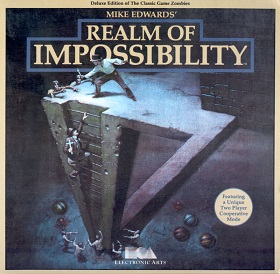
Realm of Impossibility is an action game created by Mike Edwards for the Atari 8-bit family and published by Electronic Arts in 1984. It was originally released in 1983 as Zombies and published by BRAM, a company formed by Edwards and a friend. BRAM previously developed and published Attack at EP-CYG-4.

Operation Thunderbolt is a light gun shooter video game developed by Taito and released for arcades in 1988. As the sequel to Operation Wolf, changes include two-player gameplay with two positional gun controllers mounted on the arcade cabinet, and a new forward-scrolling pseudo-3D perspective combined with side-scrolling sections.

3D Monster Maze is a survival horror computer game developed from an idea by J.K. Greye and programmed by Malcolm Evans and released in 1981 for the Sinclair ZX81 platform with the 16 KB memory expansion. The game was initially released by J. K. Greye Software in December 1981 and re-released in 1982 by Evans' own startup, New Generation Software. Rendered using low-resolution character block "graphics", it was one of the first 3D games for a home computer, and one of the first games incorporating typical elements of the genre that would later be termed survival horror.

The Lords of Midnight is an epic fantasy video game combining aspects of wargames and graphic adventures, written by Mike Singleton and originally released in 1984 for the ZX Spectrum. Very well received from the beginning, it was soon converted for the Amstrad CPC and Commodore 64. The game featured an innovative 3-D effect that Singleton called landscaping, which served to bring the player into the game much more than usual. The Lords of Midnight is often named with Elite as among the top role-playing games of the 1980s. The player must destroy Doomdark, the evil Witchking who has locked the Land of Midnight in perpetual winter. There are multiple ways in which this can be achieved. It was followed by Doomdark's Revenge also in 1984, and Lords of Midnight: The Citadel in 1995.

Gunfright is an action-adventure game developed by Ultimate Play the Game and published by U.S. Gold. It was first released for the ZX Spectrum in December 1985, then released for Amstrad CPC and the MSX the following year. The player takes the role of a sheriff in the town of Black Rock and is tasked with eliminating outlaws who are scattered throughout the settlement.

Cyclone is a multidirectional helicopter game for the ZX Spectrum released by Vortex Software in 1985. It was written by Vortex co-founder Costa Panayi who also coded the similarly styled Tornado Low Level.

Aliens: The Computer Game is a 1986 video game developed by Software Studios and published by Electric Dreams Software initially for Amstrad CPC, Commodore 64 and ZX Spectrum. It is based on the film of the same title. Ports for the Commodore 16 and MSX were developed by Mr. Micro and published in 1987.
Fat Worm Blows a Sparky is action game written by Julian Todd for the ZX Spectrum and published by Durell Software in 1986. Todd wrote the game in the five months before going to university. It was not ported to other systems, and it is the only published game he developed.

Android Two is a shoot 'em up maze video game written by Costa Panayi and published by Vortex Software in 1983 for the ZX Spectrum and in 1985 for the Amstrad CPC. It is the sequel to Android One: The Reactor Run, released earlier in 1983.
DK'Tronics Ltd was a British software and hardware company active during the 1980s. It primarily made peripherals for the ZX Spectrum and Amstrad CPC but also released video games for the ZX81, ZX Spectrum, Commodore 64, VIC-20, BBC Micro, Memotech MTX, MSX and Amstrad platforms.

Escape is maze video game for the ZX Spectrum developed by New Generation Software and published in 1982.
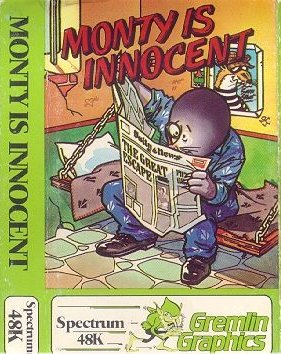
Monty Is Innocent is a video game written by Chris Kerry for the ZX Spectrum and published by Gremlin Graphics in 1985. It is a sequel to Wanted: Monty Mole released the previous year. While the game was marketed as Monty Is Innocent, it is never referred to by that title in-game; instead it merely displays Great Escape!. The inlay also features this title, on the newspaper that Monty Mole is reading in his cell.
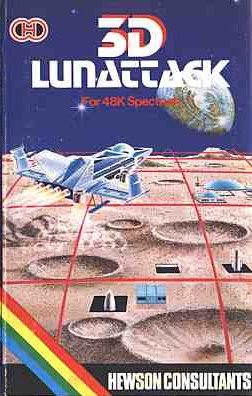
The Seiddab Trilogy is a series of video games designed by Steve Turner for the ZX Spectrum and published by Hewson Consultants. It consists of 3D Space-Wars (1983), 3D Seiddab Attack (1984), and 3D Lunattack. All three games were later published together as The Seiddab Trilogy by Hewson for the Rotronics Wafadrive. The series name is derived from the word "baddies" being spelt in reverse.

Capture the Flag is a 3D first-person perspective, two player, video game, released for the Atari 8-bit family and VIC-20 by Sirius Software in 1983. It was written by Paul Allen Edelstein as the follow-up to his 1982 game, Wayout, which has similar maze-based gameplay for one player. Along with its predecessor, Capture the Flag was among the first 3D maze games to offer the player full 360 degree movement, and one of the earliest multiplayer games from a first-person perspective within a 3D rendered environment.
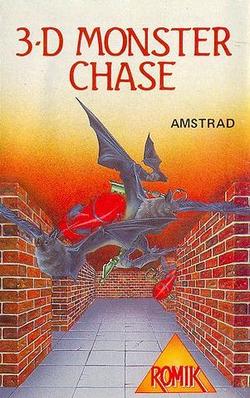
3-D Monster Chase is a first-person maze game written by Dave Noonan and released by Romik in 1984 for the Amstrad CPC and ZX Spectrum.
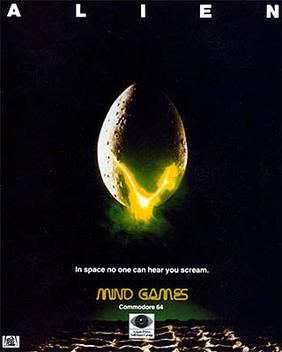
Alien is a 1984 hybrid strategy/adventure video game developed by Concept Software and published by Argus Press Software for the Commodore 64 and ZX Spectrum, and later ported for the Amstrad CPC in 1985. It is based on the science fiction horror film Alien.

Zig Zag is a shoot 'em up video game developed by Zig Zag Software and published by Mirrorsoft for the Commodore 64 in 1987. It was designed by Antony Crowther. Spectrum Holobyte published the game in North America in 1988, part of the company's International Series brand.



















